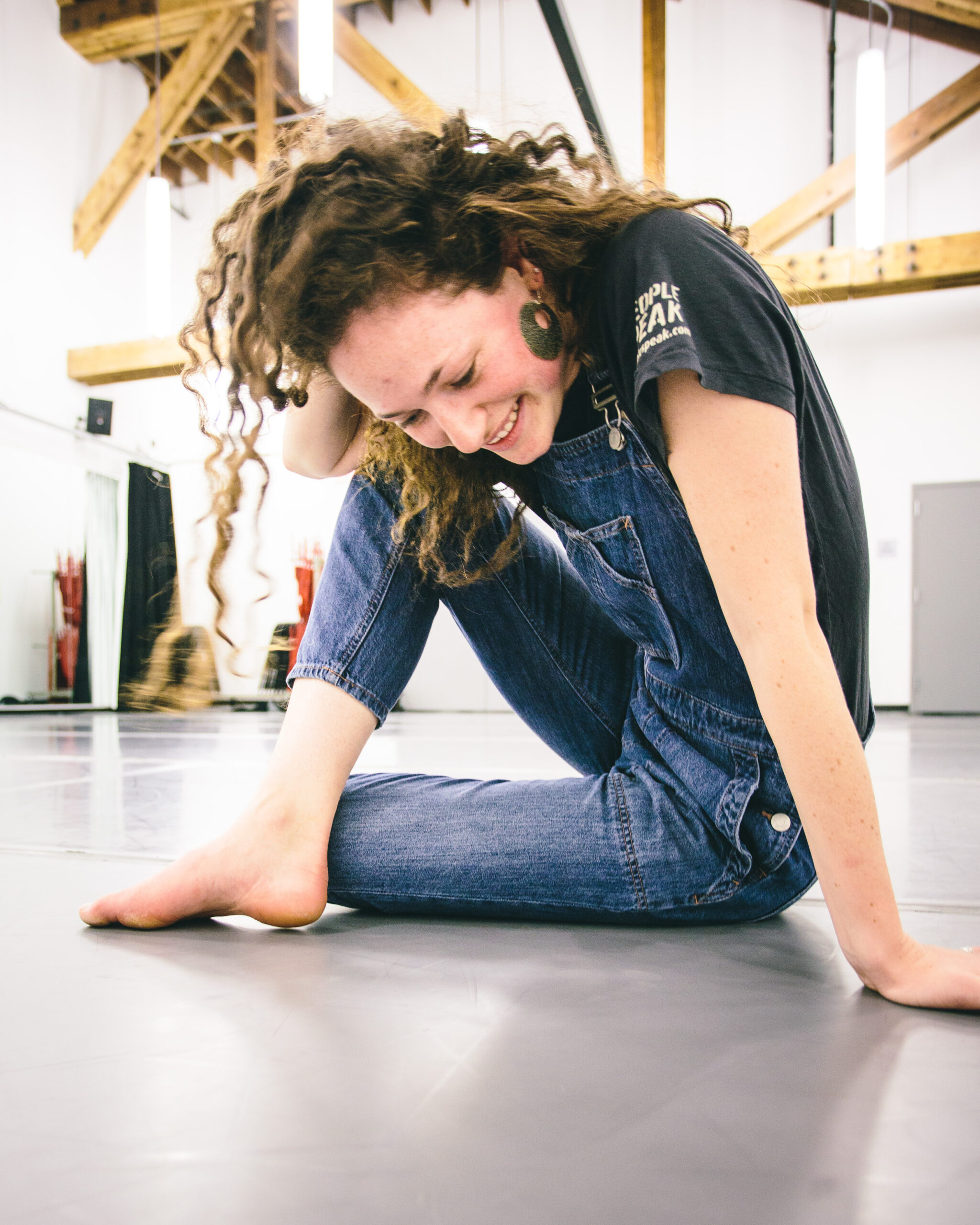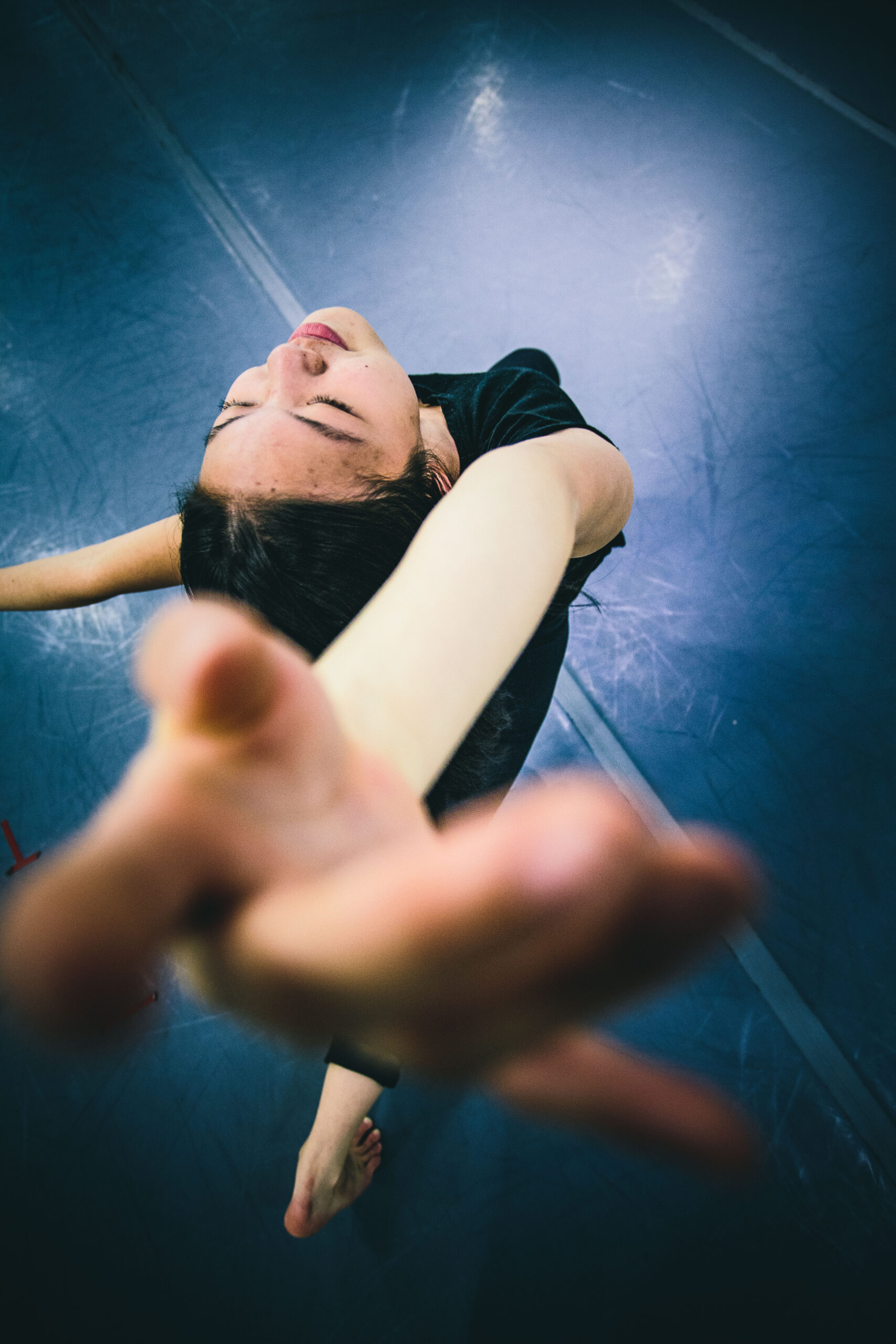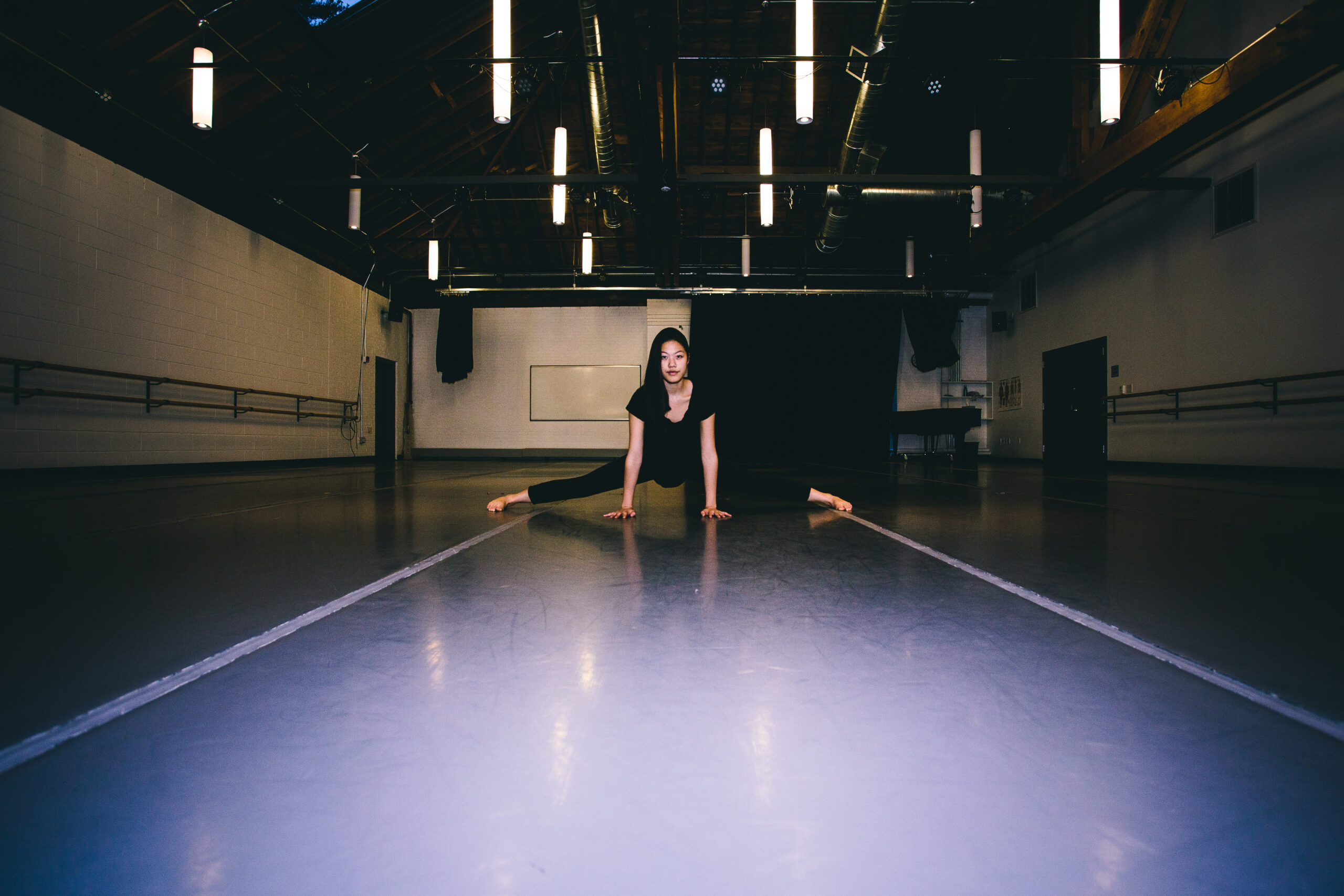Bowdoin dancers debut new duet at Portland dance month
November 16, 2018
 PJ Seelert
PJ SeelertFor two student artists, their latest show was an exercise in vulnerability. Exploring movement and meaning, Lucia Gagliardone ’20 and Felicia Wang ’20 were two of eight college students to perform in a works-in-progress show for Portland Dance Month on November 4.
Portland Dance Month is a series of workshops, classes and performances organized by Portland-based dancer Riley Watts. The Department of Theater and Dance presented Gagliardone with the opportunity to perform a new composition at The Living Room in South Portland.
“I was very nervous, because it was exposure to a new circle of people … very involved in the dance world,” said Gagliardone. “It required me to be very vulnerable and to put myself out there in a way that doesn’t feel the same as when you’re at Bowdoin.”
Initially, Gagliardone planned to create a new solo to follow the piece she debuted at Bowdoin last spring. But she eventually decided to experiment with a duet, which is the focus of her independent study.
“Creating the solo was a really meaningful experience for me, and I wanted to try recreating that movement discovery and exploration and improvisation in a process with another person,” said Gagliardone.
As such, she chose Wang to be a collaborator and a co-performer.
“In terms of collaborating, Lucia and I have danced [together] since our first semester at Bowdoin, so we have an idea of how we dance as people,” said Wang. “Initially, [she] had some thoughts, and then we worked through it together. We did some improvisation together to see how it looks on both of us. I guess the way I move and my dance style got molded into it as a consequence.”
Wang also appreciated the flexibility of Gagliardone’s creative process and the piece’s choreography.
“It wasn’t like Lucia came in and said ‘this is what you do: X, Y and Z.’ It was like, ‘here’s my general idea,’ and then we built off that together while we were working through the piece,” she said.
Over the summer, Gagliardone interned in a studio that taught dance to people diagnosed with Parkinson’s Disease. The experience of re-discovering simple movement inspired her new piece.
“[In the class], we isolated movement in our fingers and then moved it to our wrists, elbows, shoulders … I was so fascinated by the lived experience of rediscovering pretty simple and well-used movements,” said Gagliardone. “So I wanted to play around with that and see what it was like to have a piece about discovering yourself and also discovering a connection with another person.”
The performance in Portland included audience feedback on the performance in a style unlike what Gagliardone and Wang were used to at Bowdoin. Instead of discussing artistic decisions, the audience focused on suggestions of what Gagliardone should change about the piece.
“I wish I had more of a chance to discuss what my process was and talk about my piece, because it’s a really vulnerable thing to share work you’ve created, especially because it has been such a personal, improvisational process,” said Gagliardone.
It was the first time they performed the piece before an audience, and for Gagliardone, the crowd allowed her to experience the piece in a new light.
“Everything changes when there’s an audience,” she said.
Looking ahead to the December Dance Concert at Bowdoin on November 30, Gagliardone says she doesn’t see major changes in the composition’s future. But she does want to keep exploring the feelings and questions the piece raises.
“I’m excited to start investigating bigger questions about it,” she said. “I really like that we each have a unique presence in the piece. I don’t want us to be in unison or emotionally in unison, but I also think it would be really cool to start becoming aware of what each other’s individual experience is in the piece.”
As the second piece Gagliardone has choreographed, the duet has encouraged her maturation as an artist. The ability to take creative control has proven incredibly valuable for Gagliardone.
“I have agency,” she said. “I always have to have a dialogue with myself about putting myself out there, so doing the show was really good to [practice saying] ‘No, this is something I feel really good about. I want to show it to people.’”



Comments
Before submitting a comment, please review our comment policy. Some key points from the policy: